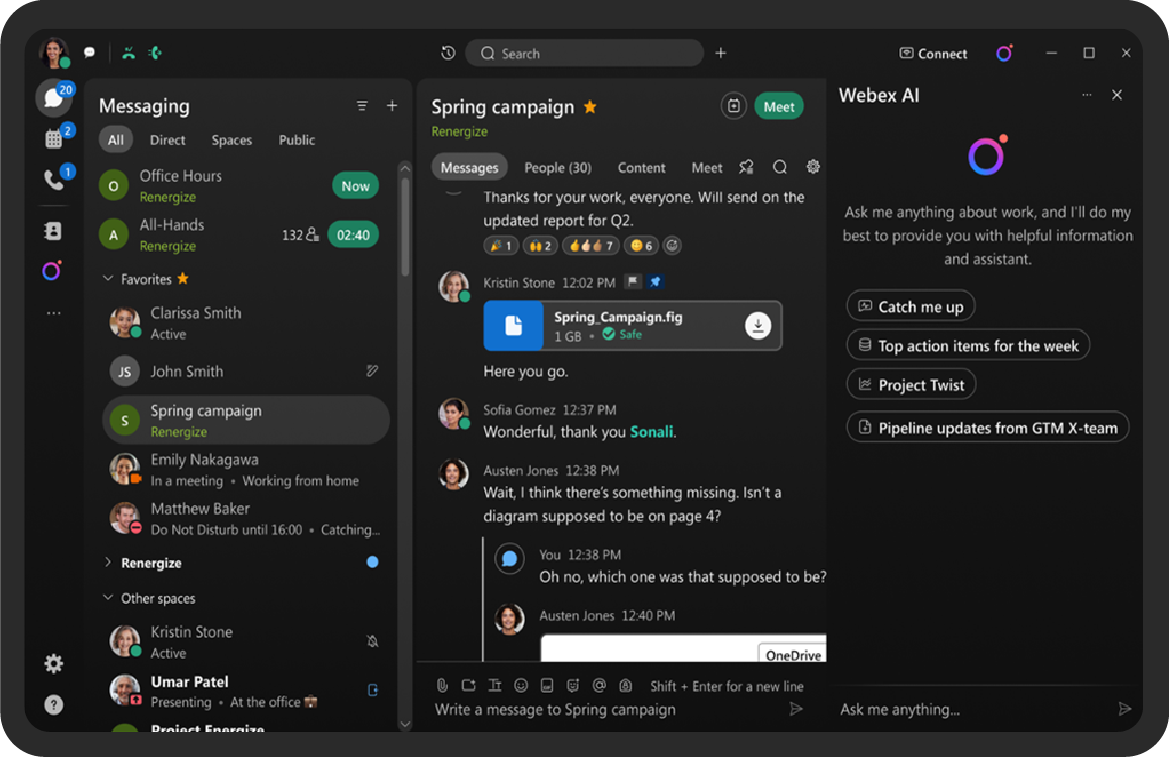Industry analysts are making bold predictions about artificial intelligence (AI).
Expect a 20%-30% reduction of human customer service and support agents by 2026, according to Gartner, thanks to increased investments in generative AI (GenAI). By 2028, GenAI, alongside digital customer service and conversational AI user interfaces, will “transform customer service and support.”
As a company that specializes in contact center transformation, we’re obligated to keep in lockstep with the latest trends—our partners and customers depend on it. The question is, what does transformation actually mean? How do you determine the qualities of an intelligent contact center and, more importantly, whether or not you have them?
In the never-ending quest to find new benchmarks and performance indicators, there’s a lot to choose from. Consider the stages of our own Contact Center AI Maturity Model:

Foundational:
- Basic chatbot and voicebot implementation for FAQs and simple tasks
- Rule-based decision trees for customer interactions
- Minimal AI-powered routing, relying primarily on predefined rules
Growth:
- AI-enabled IVAs (Interactive Virtual Assistants) with natural language understanding
- Integration of AI with CRM systems for real-time data access
- Enhanced routing using skill-based and intent-recognition algorithms
Operational Efficiency:
- Predictive analytics for customer journey insights
- Real-time AI-driven agent assist tools for knowledge surfacing and recommendations
- Proactive customer engagement powered by AI
Advanced Personalization:
- Hyper-personalized customer interactions leveraging predictive insights
- AI-driven sentiment analysis influencing interaction strategies in real-time
- Dynamic omnichannel engagement with seamless handovers between channels
Innovation and Leadership:
- Autonomous AI systems capable of handling end-to-end interactions without human intervention
- AI-powered strategic decision-making for service design and customer behavior forecasting
- Advanced conversational AI that mimics human interaction effectively.
When working with this framework, we like to start with an honest inventory. For that, we turn to KPMG’s useful Towards the contact centre of the future report, from which we’ve extracted seven prompts for evaluating the intelligence of your contact center ops.
Are your contact center leaders enabled with real-time dashboards that provide them with a clear overview of their evaluation parameters for better planning and corrective actions?
In other words, are your decision makers equipped with reliable, up-to-the-second business intelligence on KPIs that measure both operational output and customer experience (CX)?
An integrated business intelligence solution should provide:
- Holistic view of blended data from any source or department
- Visualized data with fast filtering options
- Flexible and intuitive user interface
- Precise analysis of data and its connections
- Accessibility from multiple shared devices
Do your leaders have access to the right data and insights to allow support leaders to better understand what customers will need in order to engage proactively?
This is more about reading and responding to customer needs. Their behavior and preferences. Trending issues and search queries. For example, are there questions driving a lot of case volume for which you don’t have self-service content prepared (content gap)?
These are the kinds of insights readily available—often proactively so—in an intelligent contact center, in which call center reporting plays a central role.
Does your technology provide your agents with access to all the customer information quickly and easily so that the agent can concentrate on the customer more?
The unified agent desktop isn’t a new concept but remains critical to an intelligent agent experience. According to the Customer Service Agent Relevance Report 2023, 78% of agents access an average of five systems regularly. And 80% feel that their contact center metrics depend on quick access to information.
In AI-Powered Agent Assistance, we detail the ways that AI augments and deepens the value of a unified view for agents. AI can automate time-consuming tasks in the background. It can proactively recommend solutions based on analysis of related cases. And more.
Here’s the Webex AI Assistant appearing within the Webex App, a good example of what a unified view looks like in practice:

Do your managers have the systems and forms of communication to support, coach, motivate and manage staff remotely and in office?
More than half of U.S. workers work in hybrid environments. Nearly a third (27%) work remotely, while 20% work in the office. This asks new questions of contact center managers, who must find ways to support their staff effectively.
Not surprisingly, we’re seeing more teams adopt AI-powered automations that managers can rely on. This includes:
- Automated interaction scoring to reveal the behaviors of top-performing agents, the strengths and weaknesses of every agent, and potential compliance/risk management issues.
- Real-time AI coaching and guidance that’s delivered to agents without requiring manager intervention. For example, in-call alerts on what language to use based on advanced sentiment analysis.
Adaptive learning platforms that use AI to tailor training journeys for agents based on their content interactions, performance, and available career paths.
What is your average contact center employee retention rate and why? What is the average time & cost to on-board new employees?
For 47% of contact center managers, high agent turnover and absenteeism present the biggest obstacles to effective and efficient contact center management. A high attrition rate, alongside an inefficient (and costly) onboarding program, can be key indicators that there’s more to do in terms of building an intelligent contact center.
Agents will burn out and leave for a variety of reasons, many of which can be directly and or indirectly attributed to a lack of contact center intelligence:
- Repeatedly stressful customer interactions
- Overly complicated processes and workflows
- Lack of adequate onboarding, training, and coaching
- Poor clarity on available paths for career development
- Little investment into tools that improve agent experience
Do we have the right technology to enable the integration of all the processes across the organization to provide a consistent experience irrespective of the channel the customer chooses?
Put differently: do you invest in an omnichannel contact center? Doing so allows you to connect customer touchpoints, which 40% of respondents to a 2024 CCW Market Study say is “more important than being available everywhere.” And 60% of contact center leaders “believe conversational personalization is pivotal throughout the customer journey.”
These and other capabilities are critical to delivering consistent experiences. And they are strong marks of an intelligent contact center.
Do our process owners measure the impact of their processes on the customer experience, on staff experience, and on the impact to other connected areas of the organization?
According to KPMG, a contact center on the leading edge of the maturity curve integrates its processes fully across contact center functions and underlying systems. As a result, these organizations can not only enhance their processes with intelligent technologies but also use these technologies to evaluate—and communicate—their impact on key aspects of customer, staff, and organizational experience.
With greater intelligence comes greater value
Regardless of where your contact center sits on the intelligence curve, one thing is clear: an intelligent contact center has opportunities to create value that more traditional contact centers do not.
Just take a look at the ways that contact centers are deploying AI throughout their customer journeys:

Each of these solutions stands to create value before, during, and after service interactions. Taken holistically, this level of intelligence indicates what’s possible in the intelligent contact center.
For decades, we’ve helped enterprises answer important questions about their contact center maturity. And we’ve helped them build contact center solutions tailored to their pace of digital transformation. Contact us today to see how we can help.





